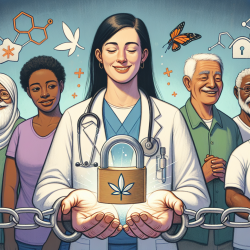Revolutionizing Opioid Use Disorder Treatment with Harm Reduction
The landscape of opioid use disorder (OUD) treatment is evolving, and harm reduction is at the forefront of this transformation. As a practitioner, understanding and integrating harm reduction principles into outpatient settings can significantly enhance patient engagement and outcomes. This approach, supported by a wealth of data, offers an alternative to the traditional abstinence-only model and aligns with the treatment of other chronic conditions.
Why Harm Reduction?
Harm reduction is a pragmatic approach that focuses on minimizing the negative consequences of substance use rather than insisting on complete abstinence. This method is especially beneficial for patients who continue to use substances and face barriers to traditional treatment models. By adopting harm reduction strategies, practitioners can better engage patients, reduce stigma, and provide comprehensive care that addresses both immediate and long-term health risks.
Key Strategies for Implementation
- Overdose Prevention: Provide intranasal naloxone and educate patients and their families on its use. Establish a clinic overdose response plan to ensure staff are prepared to handle emergencies.
- Patient-Centered MOUD: Offer flexible scheduling and telemedicine options to accommodate patients' needs. Encourage shared decision-making in medication selection and dosage.
- Stigma Reduction: Use inclusive language and normalize discussions about substance use. Screen for incarceration and intimate partner violence in a non-judgmental manner.
- Infection Prevention: Offer comprehensive testing for HIV, hepatitis, and other STIs. Provide vaccinations and harm reduction supplies such as sterile syringes and fentanyl test strips.
Creating a Supportive Environment
Building a therapeutic environment is crucial for engaging patients who have experienced stigma and mistrust in healthcare settings. Training staff in trauma-informed care and non-stigmatizing communication can foster trust and improve patient outcomes. Additionally, offering resources like hygiene kits, transportation assistance, and food pantry referrals can address social determinants of health and reduce barriers to care.
Special Considerations for Unique Populations
Practitioners should tailor harm reduction strategies to meet the needs of special populations, including adolescents, parents, and recently incarcerated individuals. For example, offering flexible communication options for youth and ensuring naloxone availability for individuals post-incarceration can enhance engagement and safety.
Conclusion
Integrating harm reduction into OUD treatment settings is not just a compassionate approach; it's a data-driven strategy that improves patient outcomes and reduces community health risks. By embracing these principles, practitioners can create a more inclusive and effective treatment environment for all patients.
To read the original research paper, please follow this link: Integrating Harm Reduction into Outpatient Opioid Use Disorder Treatment Settings.










